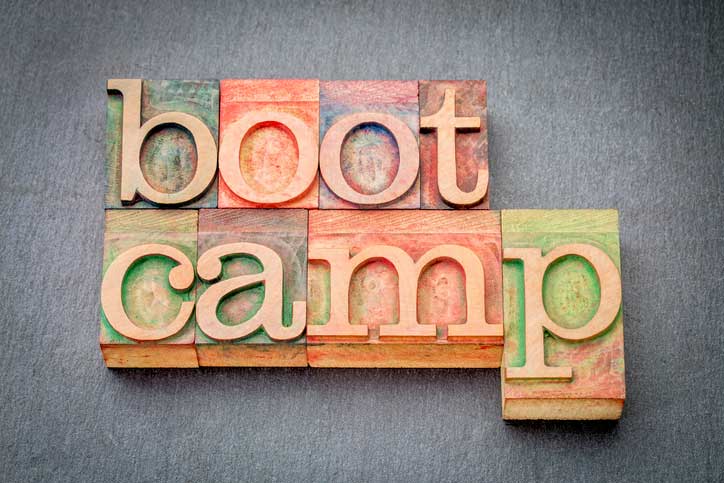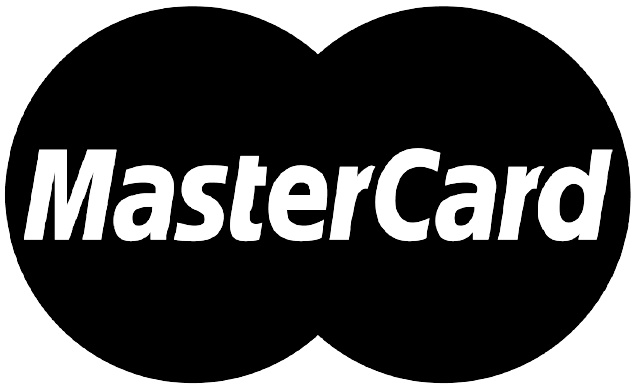“Begin at the beginning and go on till you come to the end; then stop.” So wrote Lewis Carroll in Alice in Wonderland.
It’s the same with major donor fundraising, except you don’t ever really stop. You just start up again. You do follow a prescribed path, however. And here’s what it looks like:
[row]
[col span=”6″ span__sm=”12″]
1 | Before
2 | Ground Floor
3 | Explore
4 | Back Door
5 | Adore
[/col]
[col span=”6″ span__sm=”12″]
6 | Mentor
7 | Ask For
8 | Implore
9 | Rapport
10 | Report
[/col]
[/row]
If you do this correctly, it becomes a transformational process for the donor. They want to stay connected and engaged and invested. Which is why you don’t stop. You follow up with “Some More.”
But first…
1. Before
Evaluate where you’re at today.
What pre-conditions are in place? What’s missing?
Where will you need to do more work before you’re ready to ask? Questions include:
- Do you have a robust donor data base that (1) includes data and notes about past giving, donor preferences, actions and affiliations; and (2) enables sorting, segmentation and reporting based on selected major donor criteria?
- Do you have a solid base of annual giving donors?
- Do you know what a ‘major gift’ is for your organization, and do you have major donors? (What Is a Major Gift? The Complete Guide)
- Do you have staff with major donor expertise and/or willingness to learn?
- Does your executive director do major donor fundraising and/or is s/he willing?
- Does your board involved in major donor fundraising, and are they willing to become more involved?
- Do you have enough administrative support for staff and volunteer major gift fundraisers?
- Do you have a compelling case for major donor support?
- What other obstacles may be in the way?
Everything that’s impeding you right now can be addressed.
But not if you won’t call a spade a spade.
2. Ground Floor
Put together a list of folks who meet your basic requirements.
Generally, this will mean they meet your major gift threshold (e.g., they’ve given at that level previously or you believe they have the capacity to do so based on initial screening), they have an interest in your cause, and they’ve got some sort of linkage to your organization.
One simple way to do this is simply to begin with your own current donors. Divide your database in thirds:
- Gave us 0% of our philanthropy.
- Gave us 10% of our philanthropy.
- Gave us 90% of our philanthropy.
Generally, roughly 10-20% of your supporters will account for 80-90% of all your contribution income. According to one Network for Good study, on average 88% of dollars raised comes from 12% of donors.
Begin your focus on the heavily-weighted bottom. The ground floor, as it were.
3. Explore
Research your top potential prospects.
There are many ways to attack this. You can do your own internet research, go to your local Foundation Center, purchase wealth screening and predictive modeling analytics, and/or simply holding screening and rating sessions with your own board members and other volunteers.
Whatever way you do your research, your goal is to explore the depth of likelihood that someone will make a good major donor prospect.
- Do they have capacity to give?
- Are they philanthropic?
- Are they civic-minded and/or politically engaged?
- Are they interested in what you do?
- Are they already connected to your organization?
- Are they connected to someone else connected with you?
4. Back Door
How will you get in the door with the prospects on your list?
This is about finding the right connection or linkage so you can get your foot in the door.
But often the front door is barred shut.
It’s protected by gatekeepers.
Often you just need to go around the back.
Find someone else who knows them well enough to be invited in for coffee. Or someone whose call they’ll readily accept.
5. Adore
Before you can ask, you’ve got to woo.
This is common sense.
I’m not going to marry you until I get to know you.
Once I get to know you, I’m not going to want to continue knowing you unless I feel you love me. Or at least really appreciate me.
We all want, more or less, to be adored.
Donors are no different.
Your donor isn’t going to say “yes” to a major gift ask until you do some “cultivation.”
Cultivation boils down to building a relationship.
Over time.
According to a plan.
6. Mentor
Inspire and train your askers.
Just like anything else worth doing, major gift solicitation is worth doing right. And it really doesn’t take a lot to get there. But you must pay some attention to get your would-be solicitors to the point where they will be the best they can be.
Begin with inspiration.
Connect them with their own passion for their cause by asking them critical questions:
- What got you involved here?
- What inspires you to stay involved?
- What do you find to be the most important aspect of our mission?
Ask folks to share their answers with their colleagues. Go around the table and have everyone speak. Or, if you’re a larger group, pair people off and have them trade stories for a couple of minutes with each other. Do this two or three times so folks have the opportunity to hear multiple stories, and also hone their own.
Once people tell their own personal stories a few times, they’re ready to tell them again on a solicitation visit. And it will feel natural by this time.
Once folks hear other people’s stories, they’re inspired to share them as well – adding to their repertoire of stories that showcase your organization’s mission.
Move on to ‘training.’
You can invite a facilitator in, or you can simply give folks some sample scripts, talking points, quick fact sheets and a case for support.
Then, have them practice!
Do this in pairs, or ask for volunteers to do this in front of the group. Then critique the asks, agreeing on what worked and what could be improved.
Practice some more.
I encourage folks to practice their ask three times.
Trust me. This is the magic number for getting it right and having it feel comfortable.
7. Ask For
The key is to keep your donor at the center – it’s not about you and your organization.
It’s about the donor and what they want to accomplish (through your organization).
Make them an offer they can’t refuse.
An offer to do something you know they really want to do.
Personalize and tailor your appeal.
Show them you know them.
Make it for a specific project. Make it for a specific amount.
Here’s some advice from fundraising guru Jay Love, from his perspective as a major donor:
“Usually I’m asked about a specific project and the project will have a range associated with it. Sometimes I’m asked for a specific gift. But a range is fine if I’ve been cultivated to the point where I’m very interested (e.g., we’d like to know if you’d like to support the whole project, or maybe join in with someone else to get this done?)”
Successful asks are those where you know, going in, that your prospect is “into you.”
8. Implore
You won’t always get a “yes” right away, even when you’re prepared.
I’m not suggesting you beg. I’m suggesting you persevere.
An important component of major gift fundraising – and an area where too many folks fall down – is in persisting.
When you implore, you simply persist with your ask.
In a kind, gentle and respectful way, of course.
Often you’ll find your donor really does want to give. They just need your guidance. To help them overcome a few obstacles. To show them how they can become a hero in a way they hadn’t previously considered.
And, trust me, this will leave them feeling good.
You do this in two ways, both of which will further build your relationship with your prospect:
- Inquiry
- Empathy
I specifically counsel you to inquire using what I call…
The Four Questions
- Is it the organization?
- Is it the project?
- Is it the amount?
- Is it the timing?
It’s usually not the organization if you’ve done proper homework and cultivation, but if it is it behooves you to find out.
It may be the project, in which case you need only to regroup and offer up a different project that may more deeply resonate with your would-be donor.
If it’s the amount, you may be able to talk about ways to lessen the “pain,” such as tax deductions, installment payments and so forth.
If it’s the timing, simply suggest coming back at a later date when things may have changed.
Let’s move on to empathy, otherwise known as establishing human rapport.
9. Rapport
You won’t get the answer you seek unless you understand where your prospect is coming from. Find out!
Whenever I hear something like “I’m saddled right now with kids in college… Taking care of a dependent parent… going through some financial difficulties…” I try to empathize.
Put yourself in your prospect’s shoes. Use feel, felt, found.
- First show them you hear how they feel. Connect with how tough that might be.
- Then let them know you’ve felt similarly in the past. Come up with a related circumstance in your own life.
- Then tell them a way you found to deal with the problem. Give them an alternative way of thinking about and addressing the situation.
This takes practice, so try it out on your family.
For example, when your kid says they’re tired and don’t want to go to school today, tell them you understand how they feel. Tell them you’ve felt that way too some days about going to work. Then say “I’ve found that once I get to the office, I usually feel a lot better than I would have if I’d just stayed in bed feeling grumpy. In fact, let me tell you what happened at work the last time I felt this way… Want to give it a try?”
10. Report
(If you say this in a French accent, it will rhyme with everything else)
Keep the relationship going!
Whether your prospect gives now or not, thank them for their time.
If they do give, acknowledge their support and be prepared to report on the outcomes.
Share stories that bring your mission to life.
Reassure them you are a good steward of their philanthropy.
Make them feel like the heroes they are!
Do this multiple times.
Sadly, giving is not always its own reward. It’s up to you to assure the donor gets out of the giving experience what they put into it. In fact, give them more than they anticipated. Wow them!
The more continuously you delight your donors, the more continuously they’ll delight you.
The gift is not the end of the relationship. Unless you blow it.
[divider]
This post originally appeared on Clairification and is presented here courtesy of Claire Axelrad.











